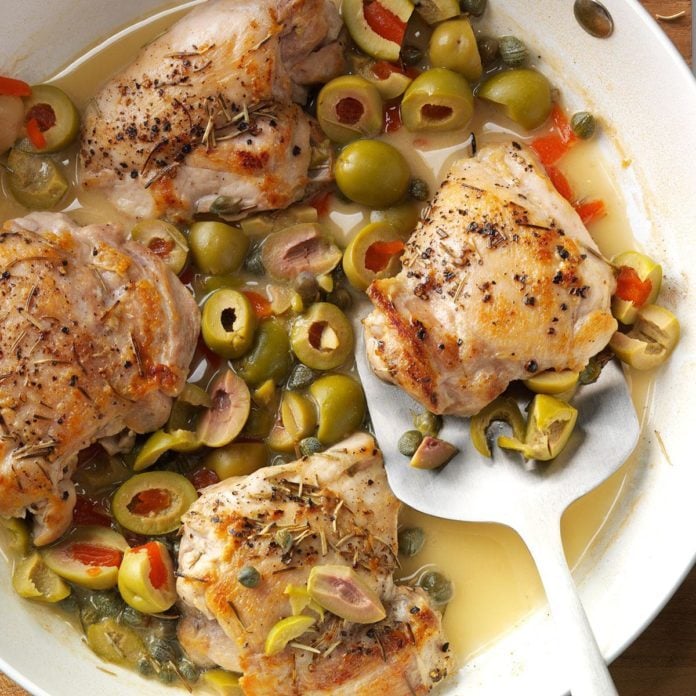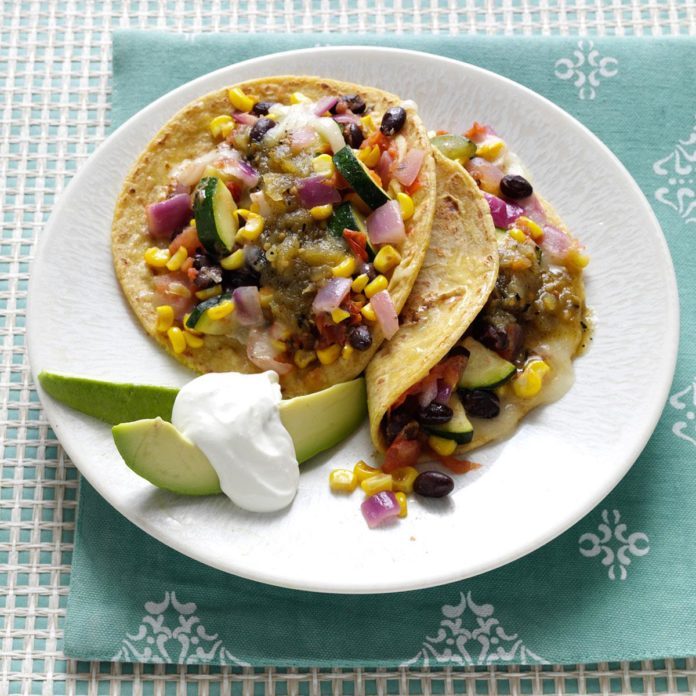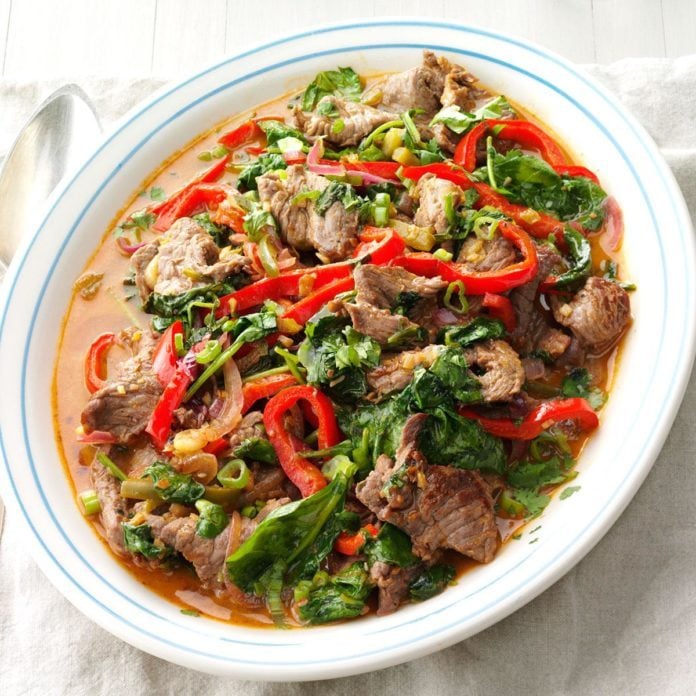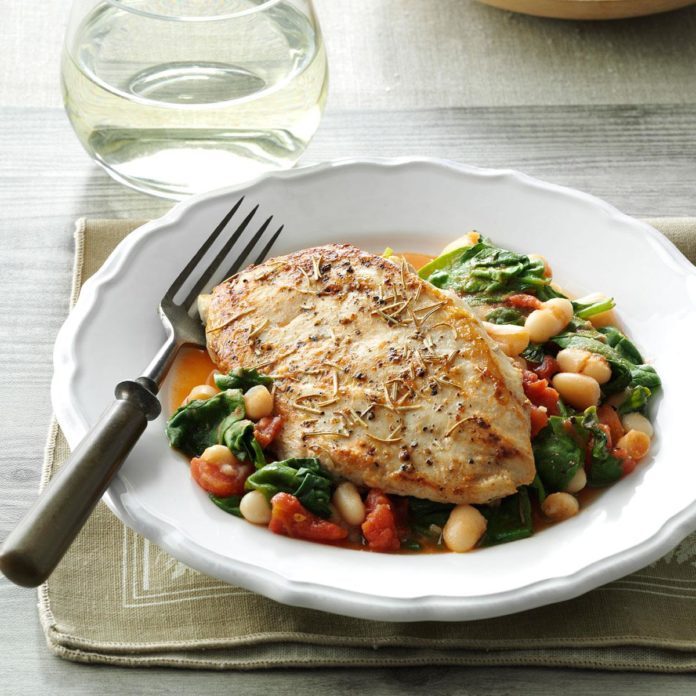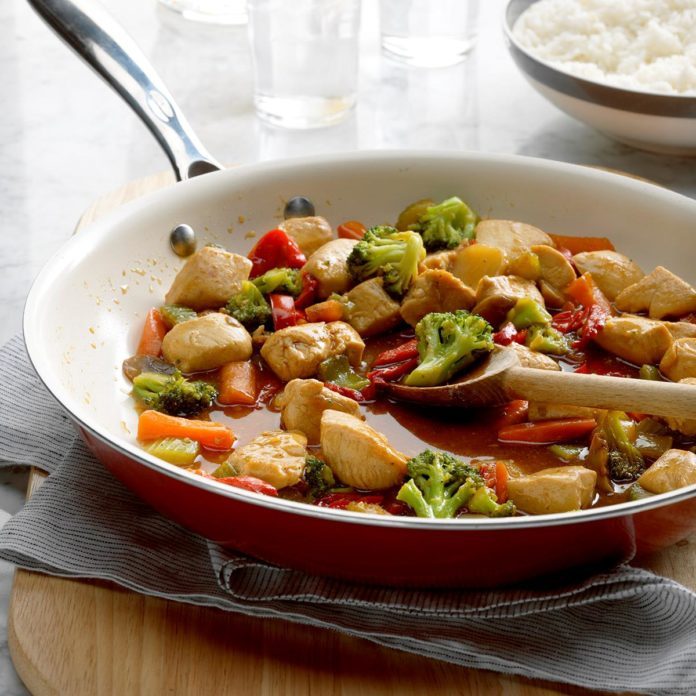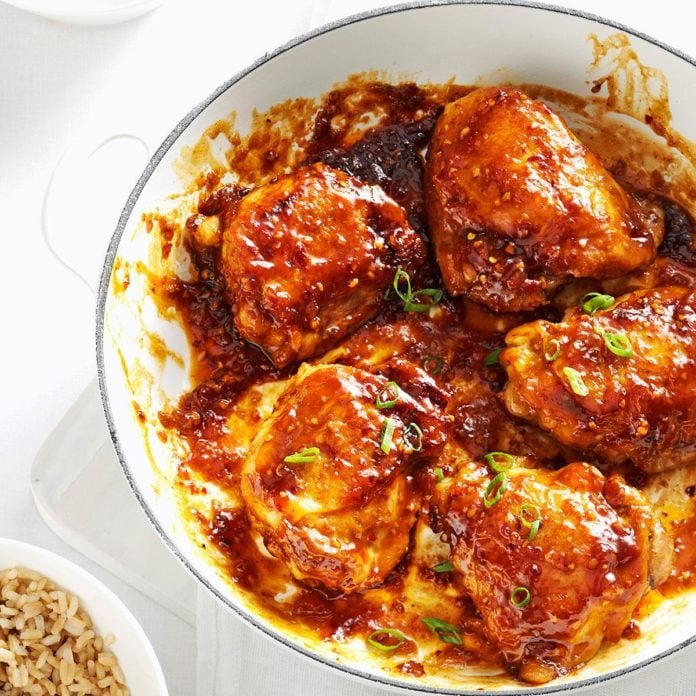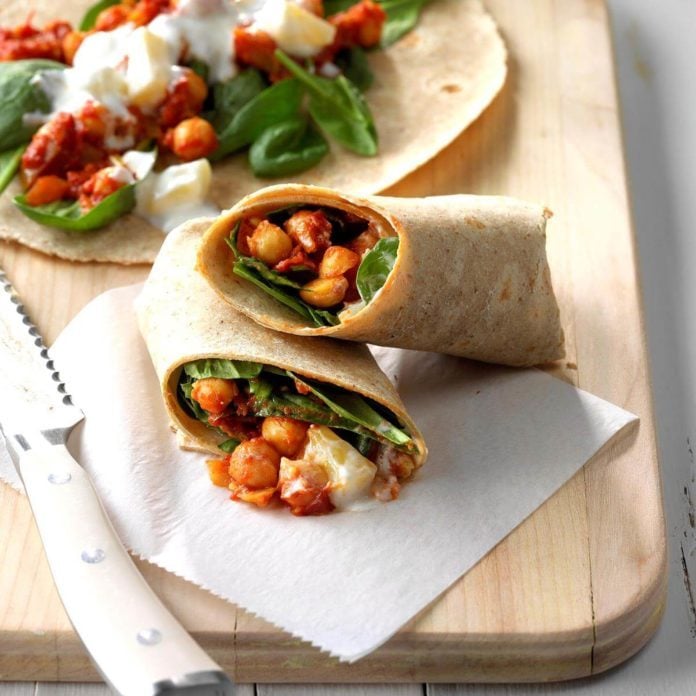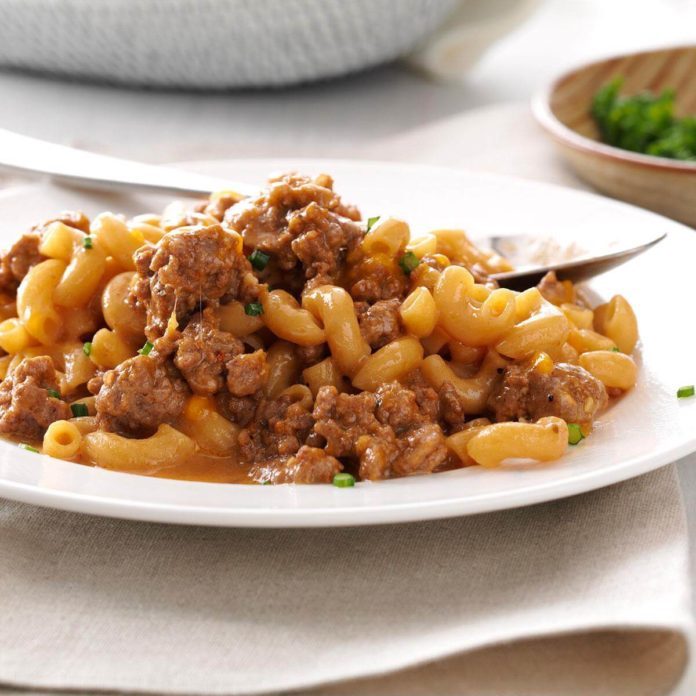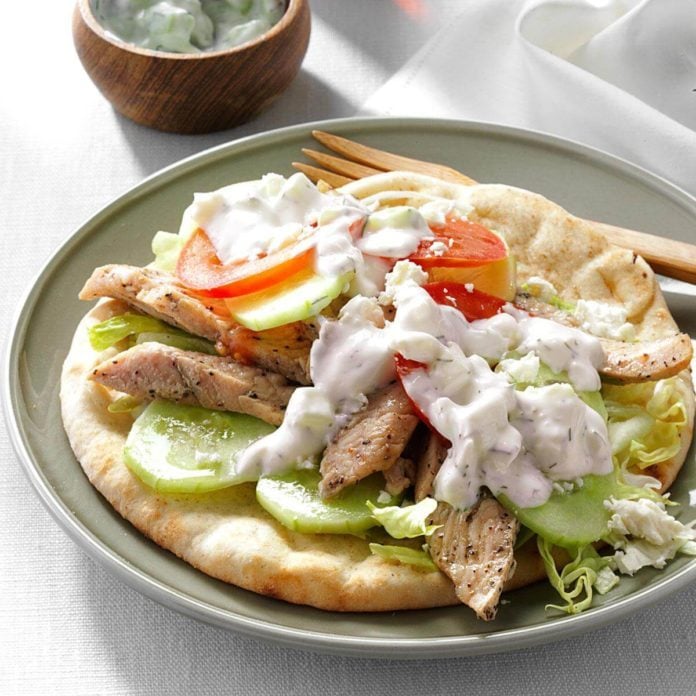A good cookware set can be the difference between making a killer meal and having it fall flat. A stainless steel skillet should be your kitchen workhorse, while that nonstick pan is essential for making perfect eggs. And a cast-iron skillet is so useful; I’m definitely taking it to the desert island with me! But what is the best cookware, and when should you use it?
Psst! These are the gadgets our Test Kitchen loves most.
Stainless Steel
Stainless steel pans are classic, and they last forever. They’re super durable, lightweight, and some brands are even magnetic (making them compatible for induction cooking methods). Unlike copper or aluminum, they don’t react with any foods, so stainless steel is my go-to for cooking anything and everything.
Buy a stainless steel pan set here.
When to use it: Boiling pasta, browning butter, or making pan sauces—it’s perfect. I often use my stainless steel skillet interchangeably with my seasoned cast-iron skillet when searing meats and vegetables.
Use stainless steel to get started on our best pasta recipes ever.
Nonstick
Teflon and other nonstick coatings have chemicals like PTFE and PFOA that have raised health concerns. They’ve given nonstick cookware a bad rap over the years, but nonstick pans have gotten safer as technology has improved. A good nonstick pan is definitely a kitchen essential, because its slippery surface doesn’t require any oil at all. Your food won’t stick (which makes it super easy to clean, too).
Buy a nonstick pan set here.
When to use it: Nonstick is my first choice for making eggs, whether fried, scrambled or over easy. I also like a nonstick pan for making pancakes or crepes, and if I’m trying to cook low-fat or nonfat without oil, I choose the nonstick without a doubt.
Try these recipes you can make with every quantity of eggs!
Ceramic
Newer to the nonstick cookware scene is ceramic coating. It’s a more environmentally friendly option (Here are more ways to go green in the kitchen!), and it’s free of worrisome chemicals. But ceramic cookware isn’t built for prolonged exposure to high heat, so just make sure you only use your ceramic pans for low-heat cooking.
Buy a ceramic pan set here.
When to use it: Use it anytime you would use a nonstick pan if you’re worried about chemical coatings.
Uncoated Cast Iron
Uncoated cast iron is that classic black, heavy cast iron that your grandmother used. When seasoned (Learn how to season here), it makes a great alternative to nonstick cookware. I wouldn’t cook eggs in it, but I use cast iron to cook just about every other substance that I don’t want to stick. Cast iron rivals my stainless steel skillet for the most-used cookware in my house.
Buy a cast-iron skillet here.
When to use it: Use it for almost anything! I always choose cast iron for cornbread and breakfast hash. It’s also great for any dishes that start on the stovetop and finish in the oven. Worried about cleaning cast-iron pans? It’s not that hard.
Put your skillet to work and make one of these grandma-approved recipes.
Enameled Cast Iron
This type of coated cast-iron cookware was made famous by the beautiful colors of Le Creuset and Staub. They don’t have to be seasoned like uncoated cast iron, which makes them a bit easier to clean.
Buy an enameled cast-iron skillet here.
When to use it: Braising, stewing, or making soups and stocks—porcelain enameled cookware will do it all, and look good doing it. I also love my enameled Dutch oven for deep frying.
Glass Bakeware
Glass is nonreactive, which means food won’t pick up off flavors from a glass baking dish. It also retains heat better than metal bakeware, which is great if you want your casserole to stay warm at the table. Never heat glass on the stovetop or under the broiler, or it can shatter.
Buy a glass baking dish here.
When to use it: Glass is perfect for casseroles, roasted meats or lasagna. In general, I only use it for baked goods that have wet ingredients, like apple cobbler.
These easy dinners are made in a 13×9 pan.
Metal Bakeware
Metal heats up quickly and is a better conductor of heat than glass. This means your food will have a more browned color and crispy edges (perfect for one of our best brownies!). Keep in mind that aluminum reacts with acidic foods, so stick to glass when baking with tomatoes or citrus.
Buy a metal baking dish here.
When to use it: I usually choose metal for baked goods (like pies, cookies or breads). I also use it for anything I want to have a little extra browned quality, like meatloaf.
Now that you know which is the best cookware for your favorite meals, let’s get to cooking! The only question is where do you start: with these cast-iron skillet recipes or by baking some desserts in a 13×9 pan?
Pick a pan and get started.
When people try this dish, they ask for the recipe, just as I did when I first tasted it when visiting a friend's home. Tossed in a delicious lemon sauce, this simple skillet dish is sure to satisfy on the busiest of nights. It's a great way to use leftover turkey. —May Evans, Corinth, Kentucky
Get Recipe
I threw this together to use up produce before going out of town. Who knew it was going to be such a hit! It's great when you don’t have much time to cook or wash dishes. —Elizabeth Kelley, Chicago, Illinois
Get Recipe
Simmered in tomato sauce, these pork chops are big at our house. I add garlic powder and Creole or Cajun seasoning before browning the chops to give them extra punch. —Holly Neuharth, Mesa, Arizona
Get Recipe
Ready-to-go crabmeat makes these delicate patties easier than other crab cake recipes. You can also form the crab mixture into four thick patties instead of eight crab cakes. —Charlene Spelock, Apollo, Pennsylvania
Get Recipe
When I was running late one night, a go-to recipe of my mom's popped into my head. Now it's one of my husband's favorites. It’s also a fast answer to unexpected company. —Patricia Swart, Galloway, New Jersey
Get Recipe
While I was visiting my cousin Lilliana in Italy, she made this heavenly chicken for lunch. Now it's a family favorite stateside, too. —Rosemarie Pisano, Revere, Massachusetts
Get Recipe
Simple recipes that land on the table fast are a lifesaver. I serve skillet pork chops with veggies and, when my husband lobbies, cornbread stuffing. —Tracey Karst, Ponderay, Idaho
Get Recipe
When you don’t know what to serve, Italian flavors are a good starting point. We combine cannellini and garbanzo beans for this snappy rice dish. —Sonya Labbe, West Hollywood, California
Get Recipe
I created these based on a turkey burger recipe, and wanted to make them even better for you. Use a favorite salsa with just the heat you like to make it your own. —Jenny Leighty, West Salem, Ohio
Get Recipe
I'm always looking for new and interesting ways to use leftover turkey—especially around the holidays. Make this skillet meal as spicy as you like by varying the amount of curry powder. —Martha Balser, Cincinnati, Ohio
Get Recipe
My husband and I like to eat seafood at least once a week. Oranges and lemon juice give scallops a refreshing burst of flavor. —Cheri Hawthorne, North Canton, Ohio
Get Recipe
Beef fajitas get an Eastern spin with gingerroot, sesame oil and wasabi, a type of Japanese horseradish. You can find it in the Asian section at your supermarket. —Taste of Home Test Kitchen
Get Recipe
I like pork medallions with apricot preserves and wondered how else I could dress them up. I played around with different flavors until I found this combo. Wows every time. —Tahnia Fox, Trenton, Michigan
Get Recipe
Add this to your meatless Monday lineup. It's great with feta cheese on top. —Elaine Ober, Brookline, Massachusetts
Get Recipe
Cooking mahi mahi with a mix of vegetables may seem complex, but I developed a skillet recipe to bring out the wow factor without the hassle and fuss. —Solomon Wang, Arlington, Texas
Get Recipe
Have a happy helping of this quicker take on something our grandmothers would make. We serve it over brown rice. It also freezes well. —Susan Chickness, Pictou County, Nova Scotia
Get Recipe
Growing up, I bonded with my dad over chorizo and eggs. My fresh approach combines them with grits and black beans. Add a spoonful of pico de gallo for extra pop. —Jenn Tidwell, Fair Oaks, California
Get Recipe
In the summer when fresh corn and just-picked tomatoes are in season, authentic Mexican dishes like this leave you always wanting that next bite. My personal preference is to serve them with a slice of lime to squeeze over the avocado. —Tonya Burkhard, Davis, Illinois
Get Recipe
Think of this stir-fry as your chance to play with heat and spice. I balance the beef with coconut milk and a spritz of lime. —Joy Zacharia, Clearwater, Florida
Get Recipe
Expect to get plenty of compliments on these fast, flavor-packed chops. They're tender and juicy. —Billi Jo Sylvester, New Smyrna Beach, Florida
Get Recipe
With two young boys constantly on-the-go, I’m always looking for ways to simplify meals. Since this recipe uses just one skillet, it's a cinch to prepare when I only have a half-hour to make dinner for a hungry family. —Sara Richardson, Littleton, Colorado
Get Recipe
My daughter’s college asked parents for the best quinoa recipes to use in the dining halls. This healthy quinoa recipe fits the bill. —Lindsay McSweeney, Winchester, Massachusetts
Get Recipe
We love a homemade meal at the end of the day. But the prep involved? Not so much. My Greek-inspired pasta is lemony, herby and, thankfully, easy. —Roxanne Chan, Albany, California
Get Recipe
I began serving a version of this dish as a side with grilled salmon. I added sausage and rice—or noodles—to make a complete meal-in-one. —Debby Abel, Flat Rock, North Carolina
Get Recipe
This spicy family favorite calls for just a few basic ingredients, so it’s quick and easy to stir up in your skillet on a weeknight. —Molly Newman, Portland, Oregon
Get Recipe
I had paella for the first time in Spain. And it was so good, I've been on the quest to re-create the rich flavors of that dish ever since. We love the shrimp, chicken, veggie and olives in this easy make-at-home version. —Libby Walp, Chicago, Illinois
Get Recipe
I'm a new mom, and my schedule is very dependent upon our young son, so I like meals that can be ready in as little time as possible. This all-in-one chicken stir fry recipe with a hint of sweetness from honey is a big time-saver. —Caroline Sperry, Allentown, Michigan
Get Recipe
If you want to make this dish vegetarian, use soy sauce instead of Worcestershire. I like this skillet meal served warm or cold. —Becky Cuba, Spotsylvania, Virginia
Get Recipe
The thick, tangy sauce makes this dish one of my favorite Asian chicken recipes. Serve the chicken over long grain rice or with ramen noodle slaw. —Dave Farrington, Midwest City, Oklahoma
Get Recipe
The key to this savory chicken is the combination of garlic and fresh rosemary and thyme. I like to serve it with mashed potatoes or crusty Italian bread. —Jan Valdez, Lombard, Illinois
Get Recipe
I've always heard that it’s important to eat a rainbow of colors to get all of the nutrients we need. Thanks to my garden-grown veggies, this dish certainly fits the bill. —Nicole Ehlert, Burlington, Wisconsin
Get Recipe
Raita, an Indian condiment made with yogurt, elevates this vegetarian dish to a satisfying gourmet wrap. If you're in the mood to experiment, try diced mango or cucumber for the pineapple and add fresh herbs like cilantro or mint. —Jennifer Beckman, Falls Church, Virginia
Get Recipe
It looks impressive, but this mouthwatering chicken and mushroom sauce comes together in no time. I think its flavor rivals that of many full-fat entrees found in fancy restaurants. —Jennifer Pemberton, Muncie, Indiana
Get Recipe
With sweet potatoes, dried cranberries and apple slices, this colorful pork dish is especially popular during fall and winter. —Mary Relyea, Canastota, New York
Get Recipe
Here's one of my husband's favorite dishes. When it's in season, substitute fresh corn for frozen. Add a dash of cayenne pepper if you like a little heat. —Sheila Gomez, Shawnee, Kansas
Get Recipe
Twenty minutes is all you'll need to make this quick stir-fry. Lean turkey, asparagus and mushrooms make it super nutritious, too. —Darlene Kennedy, Galion, Ohio
Get Recipe
This quick skillet recipe is a healthy all-in-one meal. I just add a tossed salad for a menu the entire family loves. —Nancy Brown, Dahinda, Illinois
Get Recipe
This is the ultimate simple and fulfilling dinner that uses items I typically have in my cupboard. It's so easy to prepare and cooking all in one skillet makes it a snap for clean up. —Juli Meyers, Hinesville, Georgia
Get Recipe
I invented this chicken and veggie dish to use up extra mushrooms and asparagus. My husband suggested I write it down because it's a keeper. —Rebekah Beyer, Sabetha, Kansas
Get Recipe
Greek seasoning, feta cheese and dill-cucumber sauce give this gyro an authentic taste. It was my family's introduction to how really good pita bread can be. Instead of feta cheese, we'll sprinkle on cheddar or Monterey Jack if we have it. —Donna Garvin, Glens Falls, New York
Get Recipe
The post What’s The Best Cookware? Cast Iron or Ceramic? Stainless or Nonstick? Metal or Glass? appeared first on Taste of Home.
Lindsay D. Mattison





